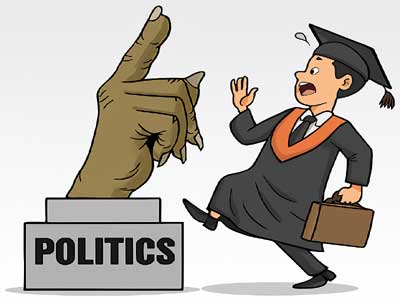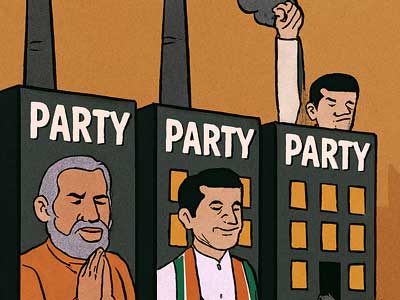Something has happened that is unsettling Washington’s power corridors. After ‘Operation Sindoor’, America’s face has turned red with anger, and Trump’s fury is reflected in his statements.
Trump claims he brokered a ceasefire, but the reality is that tariffs are being used as a weapon to pressure India. International sources say Trump tried several times to speak with Prime Minister Modi over the phone, but without success. Military analysts estimate that Pakistan’s nuclear bunkers have suffered serious damage, and some American soldiers were also killed. Even though Trump talks about seven fighter jets being destroyed, it is clear that India’s military action has dented America’s prestige somewhere.
Read in Hindi: ट्रंप टैरिफ के बीच नए अवसरों की तलाश...
Buying oil from Russia may just be the excuse; the real reason is the destruction of Pakistani military bases and America’s diplomatic setback. In his rage, Trump has left no stone unturned in insulting India.
In response, the Modi government has challenged America’s loud rhetoric with silence. Whether this silence is a strategy or helplessness, only time will tell. But amid this confrontation, the grave situation India finds itself in cannot be ignored. America has turned its trade policy into a crisis for India. Objecting to India’s energy and defence deals with Russia, Washington has imposed tariffs averaging up to 50 per cent on India’s $86.5 billion worth of exports. This has directly hit industries considered the backbone of the Indian economy—diamonds & jewellery, garments, shrimp, and chemicals. It is estimated that nearly $60 billion worth of exports will be directly affected.
The hardest blow has fallen on small and medium-sized enterprises. Surat’s diamond industry and Tiruppur’s textile exports were already reeling from global slowdown and currency volatility, and now US tariffs have further weakened their competitiveness. Exports of shrimp and other marine products—where America has been the largest buyer—are in deep trouble. On the jobs front, millions of workers may either lose employment altogether or be forced to work with unstable incomes.
Economists estimate that if this situation drags on, India’s growth rate could take a negative hit of 0.4 to 0.5 percentage points. At the same time, countries like Vietnam, Bangladesh, and Mexico have already become active to take India’s place in the US market. Vietnam is fast emerging as America’s preferred supplier of garments and furniture, while Bangladesh’s textile industry, driven by low-cost labour, is poised to overtake India. Unless India reduces logistics costs, reforms its tax structure, and simplifies export incentive schemes in time, this opportunity could permanently slip into the hands of others.
The second dimension of the tariff war is geopolitics. America’s action is not merely a trade dispute but a direct reaction to India’s growing closeness with Russia. US disagreements over the S-400 missile system and energy deals have already surfaced openly. At the same time, protectionism has now become an electoral tool in US politics. Trump is using tariffs to consolidate his domestic voter base, no matter the global cost.
It must also be remembered that tariffs will hurt not just India, but America too. India has already imposed retaliatory tariffs on US almonds, walnuts, and apples—hitting the American farmers’ lobby hard. Now, these new tariffs will increase consumer inflation and raise costs for American companies.
Yet, despite the severity of this crisis, options remain for India. It can strengthen its exports in markets such as the European Union, the UK, and ASEAN. Moreover, multinational companies are already trying to reduce dependency on China under the ‘China+1’ strategy. If India simplifies land approvals, legal processes, and tariff systems, it can naturally become a global investment hub. To convert this setback into an opportunity, India must focus on trade diversification, improving the business environment, and better utilisation of human resources.
Experts like Prof Paras Nath Chaudhary believe that while Trump’s tariff policy is an immediate crisis for India, it could also turn into an opportunity in the long term. The real question is not whether America has closed the door for India, but how quickly India finds the keys to open new doors. In times of crisis, only those nations emerge stronger that dare to turn challenges into opportunities.


















Related Items
Battle for Bihar: Struggle for power or people’s retribution?
Trump’s Conspiracy: India’s Trap or Golden Opportunity?
Gender quotas, an effective way to challenge power structures